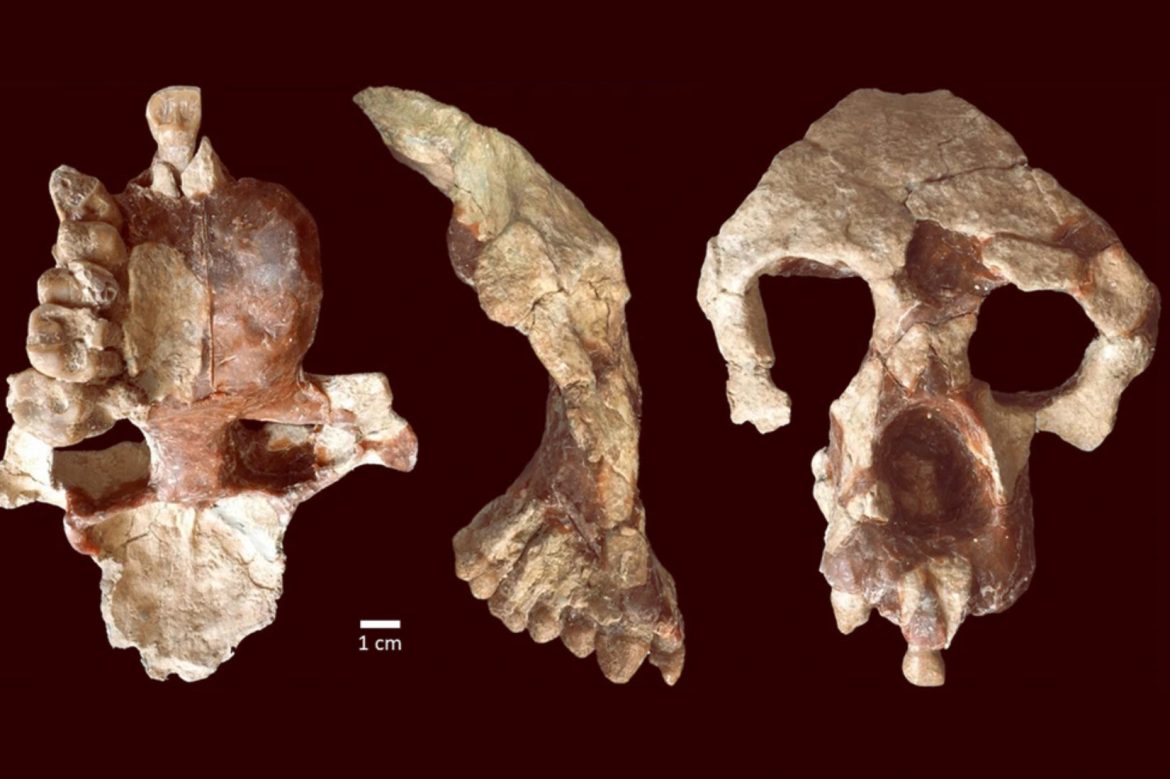
Fossil Found in Türkiye Sheds New Light on Human Origins
The origin of humanity continues to be one of the hottest topics of debate in palaeoanthropology. Although the view that our roots are in Africa has long been valid, new fossils discovered in Europe and Anatolia challenge this view, suggesting that humanity may have evolved in Europe and the Eastern Mediterranean region and migrated to Africa instead. A new humanoid skull found in a fossil bed dating back 8.7 million years in Çankırı supports this theory. The famous Lucy, the Australopithecus afarensis fossil discovered in Ethiopia in 1974 is about 3.2 million years old.
The Çorakyerler region of Çankırı is famous for its abundance of fossils. In excavations carried out for 22 years by Prof. Ayla Sevim Erol, Head of the Anthropology Department of Ankara University, 4,169 fossils belonging to 43 species have been unearthed and a number of new species have been discovered. The new humanoid fossil unearthed in Çorakyerler in collaboration with the University of Toronto was named Anadoluvius turkae.
Discovered in 2015, the skull fragments of Anadoluvius turkae, thought to be the size of a large chimpanzee (50-60 kg), are very well preserved. Almost all of its face can be reconstructed. Its strong jaws and teeth indicate that it probably fed on hard plant roots. In addition to various geological findings, fossils of antelope, elephant, zebra, rhinoceros and other animals discovered in the area suggest that the region was not covered with forests, and thus Anatoluvius probably spent time on the ground instead of on top of trees, and therefore walked on two legs.
The idea that the hominin group, which includes humans along with chimpanzees, bonobos and gorillas, spread from Africa has been accepted valid since Darwin. However, new species discovered from Europe in recent years, especially the Ouranopithecus and Graecopithecus found in Greece and Bulgaria, date back to the Late Miocene period -much older than the hominin fossils found in Africa.
Our ancestors who lived in the Balkans and Anatolia are thought to have spread from Central and Western Europe. David Begun, one of the researchers says, “Our findings further suggest that hominines not only evolved in western and central Europe, but spent over five million years evolving there and spreading to the Eastern Mediterranean before eventually dispersing into Africa, probably as a consequence of changing environments and diminishing forests. The members of this radiation to which Anadoluvius belongs are currently only identified in Europe and Anatolia.”
But scientists emphasize that this should not be misunderstood. The claim in question applies to the common ancestor of hominins, not our ancestors who split from chimpanzees and bonobos in the process of evolution.
Although fossils of the first hominins who lived 9-8 million years ago are frequently found in Europe and Anatolia, the oldest fossils found in Africa date back to around 7 million years ago. Therefore, in order to provide definitive findings on where our ancestors originated and spread, we need new fossils dating back 7-8 million years to analyse.
Scientists emphasize that, especially in paleontology, it is important to remember that “absence of evidence is not an evidence of absence”.
REFERENCES
- 1. https://www.nature.com/articles/s42003-023-05210-5
- 2. https://phys.org/news/2023-08-ancient-ape-trkiye-story-human.html
- 3. https://www.livescience.com/archaeology/human-and-ape-ancestors-arose-in-europe-not-in-africa-controversial-study-claims
- 4. https://education.nationalgeographic.org/resource/lucy-discovered-africa/
